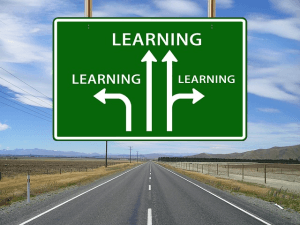 One avenue of addressing the decline in educational rankings in the United States and other countries is Differentiated Instruction. This is a teaching method that recognized differences in the way students learn and adjusts instruction methods to meet student needs. There are several theories that impact the educational direction of teachers working with students, especially those with special needs.
One avenue of addressing the decline in educational rankings in the United States and other countries is Differentiated Instruction. This is a teaching method that recognized differences in the way students learn and adjusts instruction methods to meet student needs. There are several theories that impact the educational direction of teachers working with students, especially those with special needs.
Definition of The Term
Wikipedia defines differentiated instruction as a way to “provide different students with different avenues of learning.” These avenues often traverse the same classroom with “traditional learners.” Most students, however, differ in how they learn material, how they process it and how they put it into context so that they retain it. It is the teacher’s responsibility to match the student’s path of learning to his abilities and his readiness to learn the material as well as his educational profile.
Is This Approach Necessary?
According to statistics found at Scholastic.com, in 2003 eight million students were identified as “struggling readers.” Because reading is foundational for all subjects, these students tended to be in the lower 25 percent of their classes, and were 20 times more likely to drop out. In fact, studies have shown that 70 percent of US students need some type of differentiation in instruction. These are not students from one social class or income level, but representative across-the-board of the student population. Although some of these would be classified as “special needs,” scientists are finding out that there are different kinds of intelligence.
What are the Theories Surrounding Differentiation?
One theory is that there are eight types of intelligence. These are: linguistic intelligence; reasoning and math intelligence; spatial intelligence; body, or kinesiology intelligence; musical intelligence; interpersonal intelligence, which includes a so-called “people-person;” intrapersonal intelligence, which means the person is more self-aware, and naturalist intelligence.
Another theory lists only two intelligence types: IQ and EQ, or Intelligence Quotient and Emotional Intelligence Quotient. These terms must be addressed with caution, because some studies have demonstrated that high IQ does not necessarily correlate with success later in life.
What Do these Theories Imply?
They mean that students with high aptitude in some areas may suffer in others. Teachers cannot make judgments based on narrow standards. In addition, there is no formula for applying the theories to teaching. Educators must rely on their assessments of the students in class, an assessment that goes beyond examination scores and IQ tests. The teacher must recognize diverse learning adaptations and address them in curriculum and in teaching methods.
One method of working with students of differing abilities and learning preferences is to assign group work. That way, students learn from one another.
Another way teachers address the differences is to focus on problem-solving and reasoning skills instead of rote material. In addition, the teachers can negotiate with the students to allow them a choice in the way they complete assignments.
Another responsibility teachers accept when using Differentiated Instruction is the need to constantly assess progress and adjust methods to it.
Primary students generally learn to read in programs that guide them through levels and motivate them. When the students reach the fourth grade the teaching methodology changes and becomes more uniform. That is why the statistics mentioned at the beginning of this article are meaningful. When students are taught in ways that make sense to them, they can learn to apply those methods to self-study. They may become successful university students and professionals.
Differentiated Instruction matters because there must not be a disconnect between what students are taught and what they learn.



